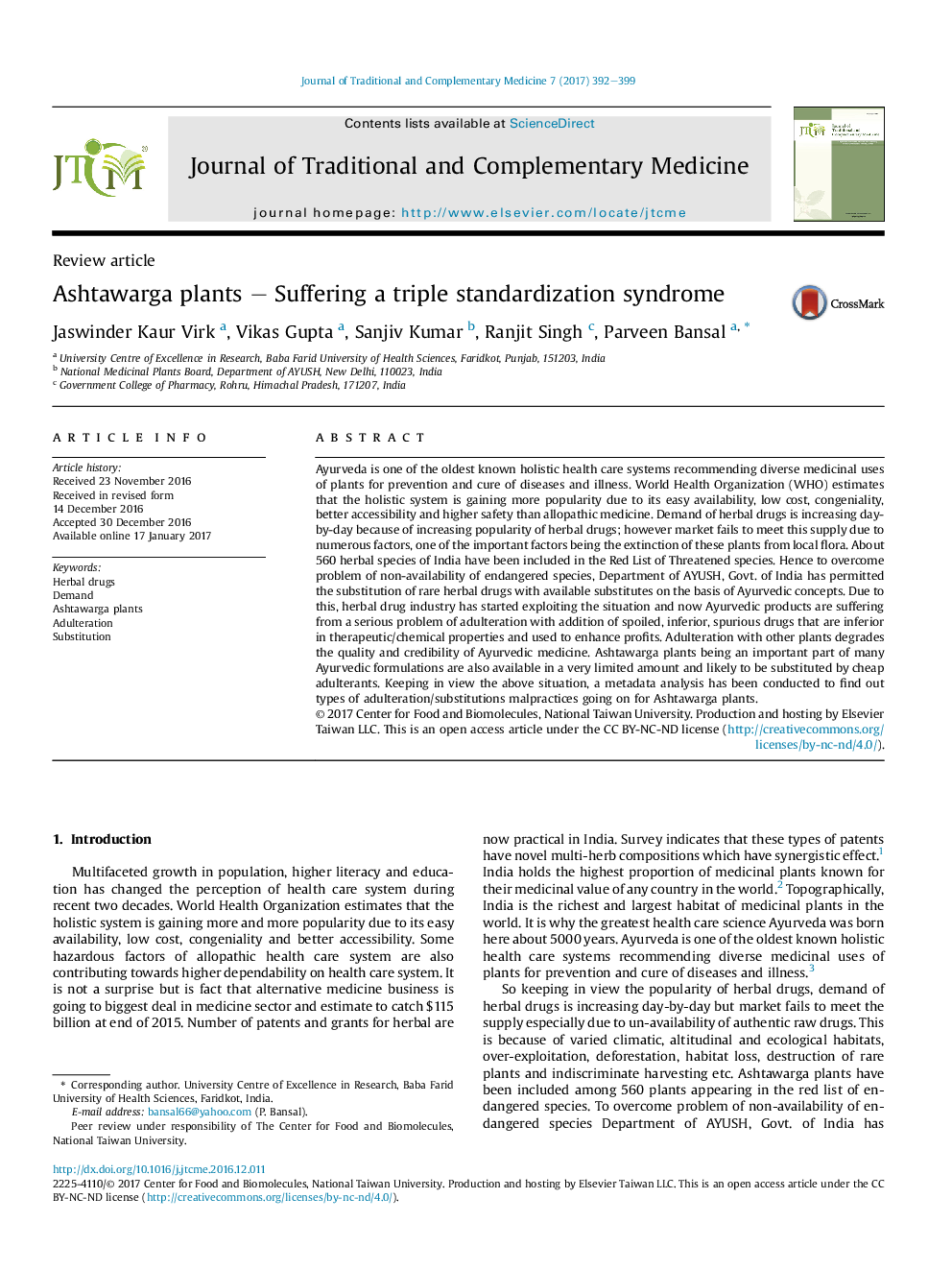| Article ID | Journal | Published Year | Pages | File Type |
|---|---|---|---|---|
| 5635330 | Journal of Traditional and Complementary Medicine | 2017 | 8 Pages |
Ayurveda is one of the oldest known holistic health care systems recommending diverse medicinal uses of plants for prevention and cure of diseases and illness. World Health Organization (WHO) estimates that the holistic system is gaining more popularity due to its easy availability, low cost, congeniality, better accessibility and higher safety than allopathic medicine. Demand of herbal drugs is increasing day-by-day because of increasing popularity of herbal drugs; however market fails to meet this supply due to numerous factors, one of the important factors being the extinction of these plants from local flora. About 560 herbal species of India have been included in the Red List of Threatened species. Hence to overcome problem of non-availability of endangered species, Department of AYUSH, Govt. of India has permitted the substitution of rare herbal drugs with available substitutes on the basis of Ayurvedic concepts. Due to this, herbal drug industry has started exploiting the situation and now Ayurvedic products are suffering from a serious problem of adulteration with addition of spoiled, inferior, spurious drugs that are inferior in therapeutic/chemical properties and used to enhance profits. Adulteration with other plants degrades the quality and credibility of Ayurvedic medicine. Ashtawarga plants being an important part of many Ayurvedic formulations are also available in a very limited amount and likely to be substituted by cheap adulterants. Keeping in view the above situation, a metadata analysis has been conducted to find out types of adulteration/substitutions malpractices going on for Ashtawarga plants.
Graphical abstractDownload high-res image (187KB)Download full-size image
